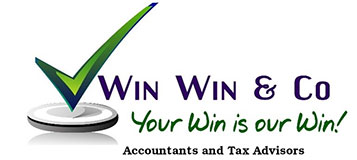When is the reverse charge needed on VAT returns?
The number of business transactions subject to the VAT reverse charge has increased in recent years, even more so after Brexit. How can businesses ensure they're getting the VAT returns right and that their suppliers dealing with it correctly?

Reverse charge mechanism
The outcome of the reverse charge is your customers will account for VAT on a business's sales instead of the business as the supplier, and vice-versa. In some cases, this acts as an anti-fraud measure, preventing a supplier from charging 20% VAT and then disappearing without declaring tax to HMRC on a return. In other situations, it is an administrative measure, e.g. avoiding the need for lots of overseas suppliers having to register for UK VAT.
If a business accepts an incorrect VAT charge from a supplier when the reverse charge should apply, HMRC has the power to assess it for the tax that should have accounted for in Box 1 of the return, i.e. as if the business had made the reverse charge correctly.
Services purchased from abroad
If a business buys services from abroad, it must account for the reverse charge on the returns, based on the VAT rate that applies to the service under UK law, i.e. 20% in most cases. This rule was unaffected by Brexit because it has always applied to services purchased from abroad and not just the EU. The business will make return entries as follows:
Box 1 (output tax) - usually at a rate of 20% of the invoice value
Box 4 (input tax) - the same figure as Box 1 unless the business has an input tax restriction with partial exemption, private or non-business issues
Box 6 (outputs) and Box 7 (inputs) - based on the net value of the invoice issued by the overseas supplier
The Box 6 entry catches out many business owners. The logic here is that the entry is accounting for VAT that would have been paid by overseas suppliers if they were registered for UK VAT, i.e. output tax in Box 1 and outputs in Box 6.
Import of goods
If a business imports goods it should elect for postponed VAT accounting for all of the arrivals. This means that the business will not be charged VAT by HMRC at the time of import but will carry out a reverse charge calculation on the next return. The return entries for imports are almost the same as for purchases of services from abroad. The difference is that there is no Box 6 entry with imported goods.
Anti-fraud measures
Businesses in the following industries must be aware that the reverse charge will sometimes apply to business-to-business sales and purchases:
- building industry - most supplies of labour between VAT-registered builders have been subject to the reverse charge since 1 March 2021
- mobile phones and computer chips - with an invoice/sales value exceeding £5,000 excluding VAT
- wholesale gas and electricity
- emissions allowances
- wholesale telecommunications
- renewable energy certificates.
Related Topics
-
Changes to registration threshold?
It’s rumoured that the Chancellor will raise the VAT registration threshold from £90,000 to £120,000 to stimulate economic growth. But other reports suggest it could be cut to £30,000 to raise revenue. What would these changes mean for your business?
-
HMRC to raid bank accounts for unpaid tax
HMRC is restarting the use of direct debt recovery for individuals and businesses who choose not to pay the tax they owe despite having the means to do so. Who’s in the firing line?
-
Mortgage interest: don’t miss out on unused relief!
You own a buy-to-let property and need to report your profits for 2024/25. You have a mortgage, but your calculations show that the tax reducer will exceed the rental profit. Will the excess go to waste?

 This website uses both its own and third-party cookies to analyze our services and navigation on our website in order to improve its contents (analytical purposes: measure visits and sources of web traffic). The legal basis is the consent of the user, except in the case of basic cookies, which are essential to navigate this website.
This website uses both its own and third-party cookies to analyze our services and navigation on our website in order to improve its contents (analytical purposes: measure visits and sources of web traffic). The legal basis is the consent of the user, except in the case of basic cookies, which are essential to navigate this website.